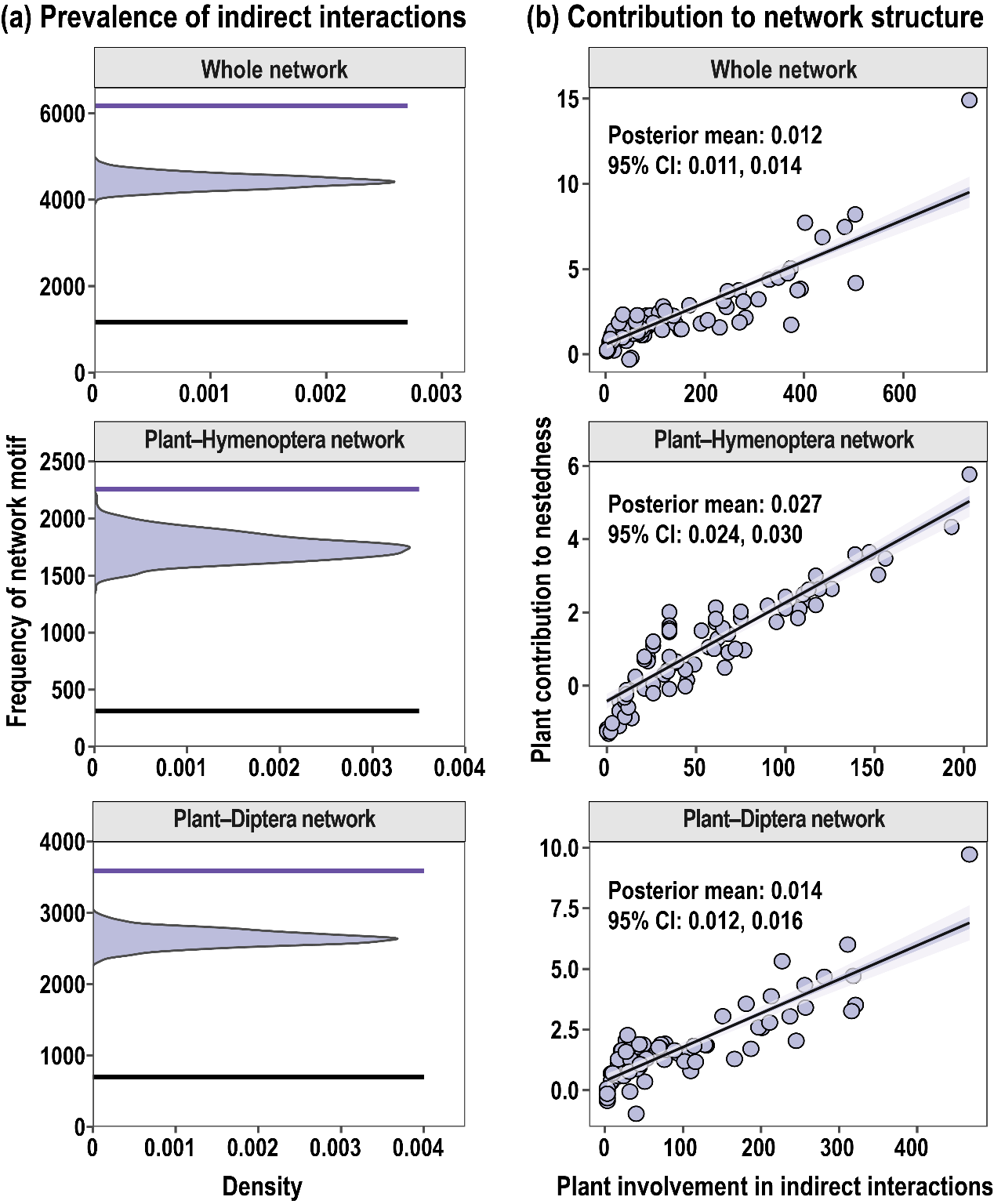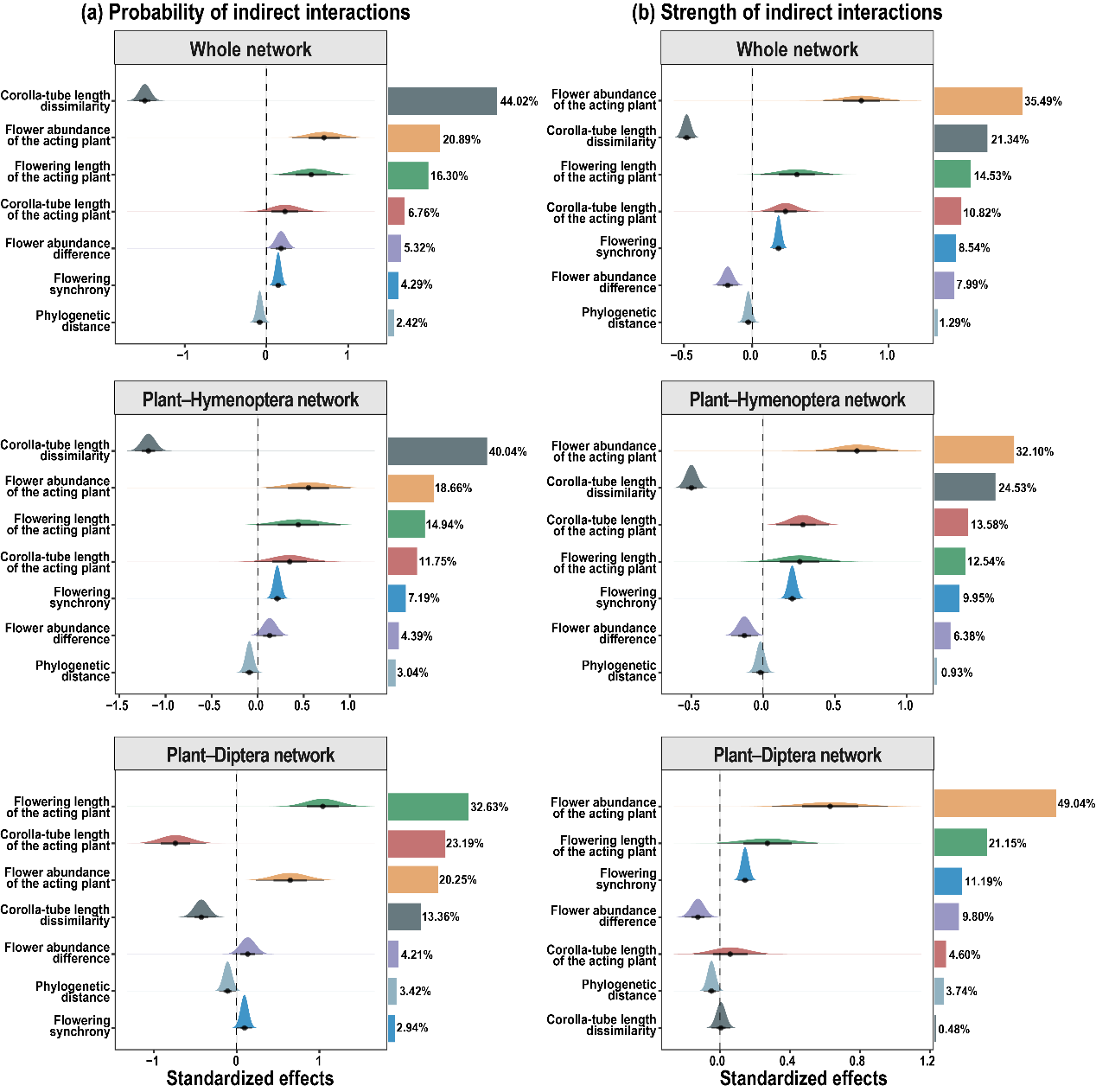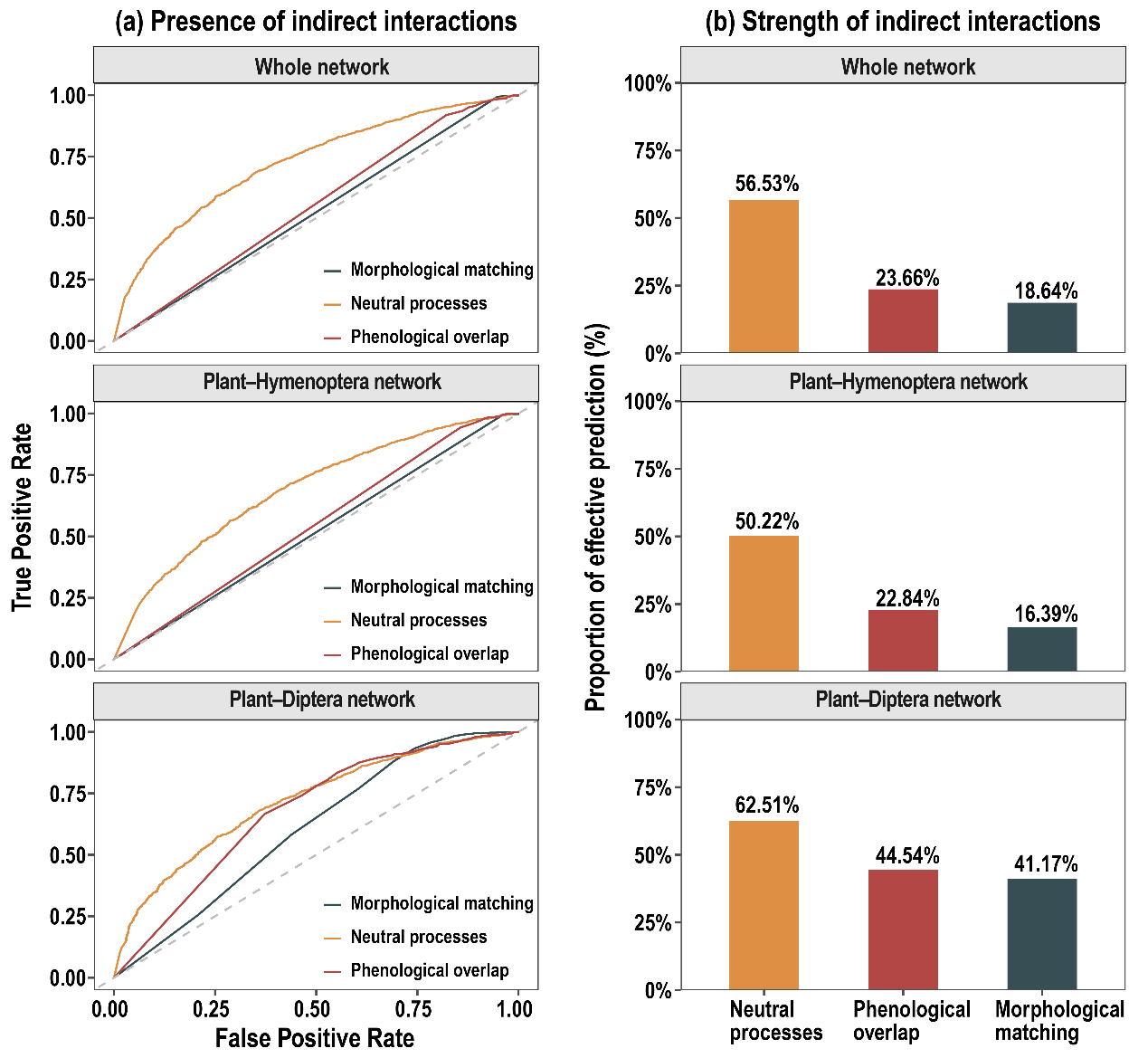
The Hengduan Mountains are recognized as one of the world's biodiversity hotspots. In the region's alpine meadows, more than 100 plant species often bloom simultaneously during a relatively short season, drawing visits from hundreds of insect pollinators. Amid this striking diversity, a key question emerges: How do so many plants share pollinators and coexist stably?
To find answers, researchers from the Wuhan Botanical Garden (WBG) of the Chinese Academy of Sciences studied over 120 insect-pollinated plant species in a meadow near Shangri-La county. The team documented nearly 7,000 flower visits, measured traits of 93 plant species and 258 pollinator species, and built pollination networks for bees, flies, and the entire ecological community.
Their findings were recently published in Journal of Ecology.
The researchers found that pollinator-mediated indirect interactions between plants were widespread, occurring six times more frequently than direct plant-pollinator interactions. These hidden links boosted network nestedness: a structural pattern that enables specialist plants (which rely on few pollinators) to coexist with generalist plants (which attract many visitors). This dynamic effectively reduces competition and maintains high biodiversity.
Flower traits strongly influenced which species share pollinators. In bee-focused and overall networks, corolla-tube length determined whether two plants shared pollinators; in fly networks, flowering duration was the most critical factor. Once plants were connected through shared pollinators, flower abundance became the primary driver of indirect interaction strength across all networks. Abundant species acted as "network hubs," steering pollinators toward neighboring plants.
When accounting for both plant and pollinator traits, neutral processes (interactions shaped by species abundance) predicted indirect interactions better than niche-based processes. In short, abundance generally outweighed trait-matching in structuring indirect interactions in this alpine meadow.
These findings underscore the role of abundance, flowering phenology, and morphological traits in shaping pollinator-mediated plant-plant indirect interactions. They also shed light on the mechanisms sustaining biodiversity for both plants and pollinators—organisms that act as "invisible scaffolding" to support biodiversity in species-rich plant communities.
This study was supported by the National Natural Science Foundation of China.

The prevalence of pollinator-mediated plant-plant indirect interactions in pollination networks and their contribution to network structure. (Image by WBG)

Effects of flower traits on pollinator-mediated plant-plant indirect interactions. (Image by WBG)

Predictive ability of neutral and niche-based processes on pollinator-mediated plant-plant indirect interactions. (Image by WBG)

86-10-68597521 (day)
86-10-68597289 (night)

52 Sanlihe Rd., Xicheng District,
Beijing, China (100864)

